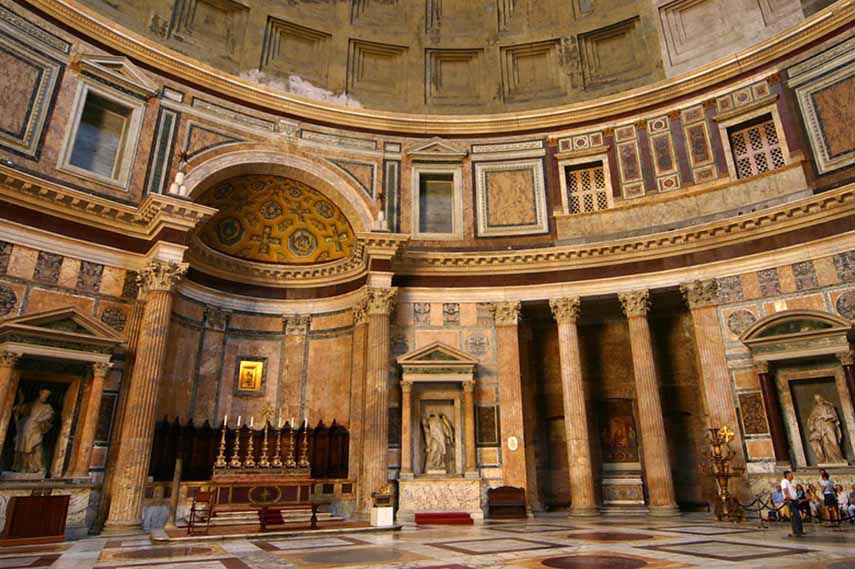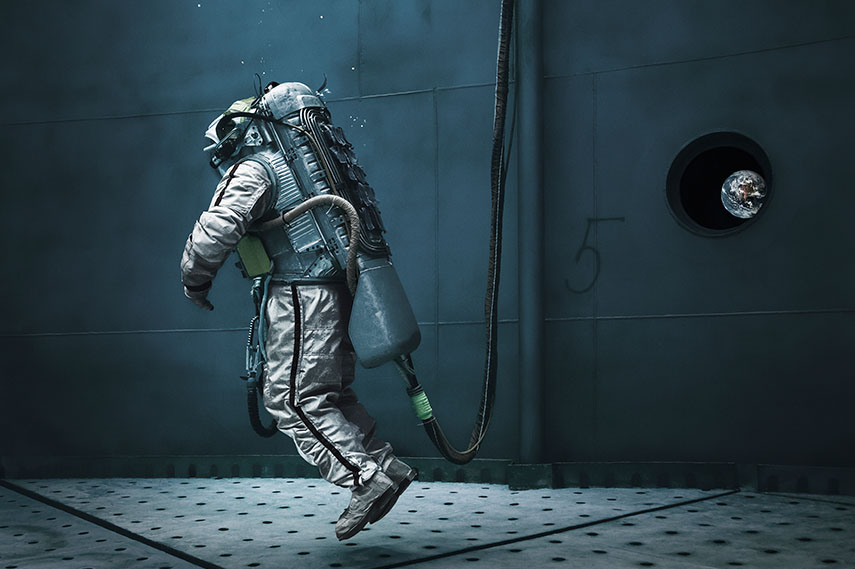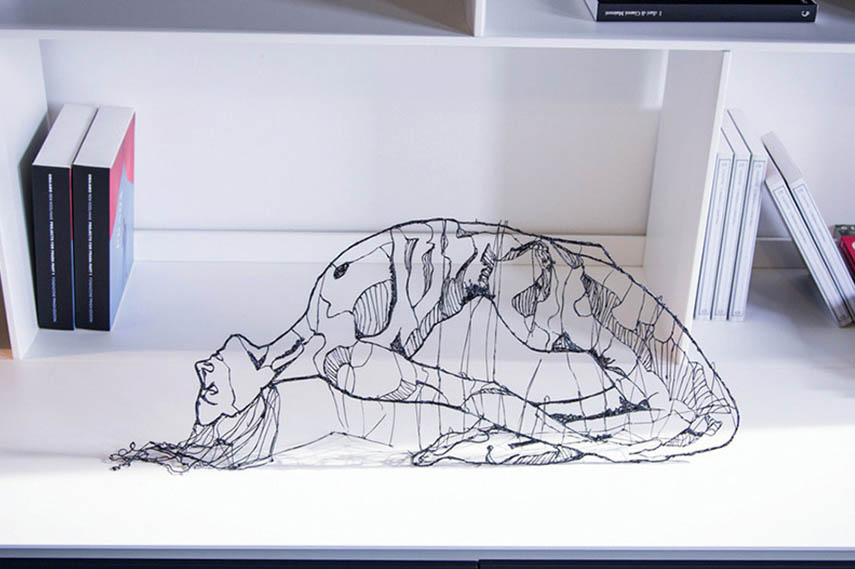Science Is More of an Art Than a Science Origin
Art and science. A tale as old equally time. How connected are they? How long have they been inseparable? And finally, what do they really have in mutual? The relationship between these two seemingly polar opposites dates back to the very dawn of culture. Ever since the humankind discovered fire and learned how to utilize it, this early on scientific breakthrough has influenced prehistoric fine art in more than ways than one. Fire provided low-cal, low-cal provided the possibility of cartoon inside the caves. These drawings have influenced the early on fine art, which later influenced the ancient masters, and then on and so forth. In aboriginal Greece, Eratosthenes of Cyrene, a mathematician, astronomer, and geographer, was also known as a poet and music theorist. Aristotle, the famous philosopher has defined art as the realization in the external class of a true idea, the sources of which are the natural dear of false, feature of humans, and the pleasure humans experience in recognizing likeness. He has postulated that art is not simply mere copying, it seeks to seize the universal type in the individual occurrence.

The Ancient Societies
Skipping back to ancient Egypt, the pyramids are probably i of the best examples of the intertwining relationship between art and science. Built as the tombs for Pharaohs, and apart from them being the obvious examples of creativity and science working together, the pyramids hid the sarcophagi, the vessels for corpses. These antiquities were made with so much intendance, and so much precision, and with such regard to our main stars today, fine art and science. The careful layout of the designs, the color schemes, the decorative ornaments and iconography of religious symbols, mixed with the impeccable precision of applied scientific methods of the time, such every bit that of mummification, makes these coffins one of the prime number examples of the inseparability of scientific research and the creative expression. Some other wonderful example is the hieroglyphs, astounding works of art that were used as a means of writing downwardly ideas, calculations, and so on.
Fast forrad to ancient Rome and its glorious Pantheon, and the fact that it still stands even though information technology was built in the 2nd century AD. Made out of concrete, without the reinforcement of steel, it is proudly occupying Piazza della Rotonda, despite the earthquakes, weather, Barbarian invasions, and the mere fact that Mother Nature has no mercy towards the man-made constructions. Scientists have been perplexed for many years, trying to effigy out the hole-and-corner of its longevity, and the new study has shown that the ingredient of Roman concrete was the blend of volcanic ash and limestone used in the mortar. The special durable mineral called strätlingite was discovered in the analyses, and the crystals formed in the process of mixing helped forestall microscopic cracks from spreading, proving the evidence of the inseparable bail between scientists and artists of the fourth dimension.

Leonardo da Vinci and Other Great Masters
One cannot talk about art and science without mentioning the great Leonardo da Vinci, the Italian polymath who was the depiction of the blend betwixt the ii terms. He was an inventor, interested in painting, sculpture, music, architecture, science, mathematics, literature, anatomy, astronomy, geology, cartography, and engineering, among others. He is the inventor of the parachute, tank, and the helicopter, he is one of the greatest painters of all time, he was a truthful Renaissance Man, the universal genius, the man of superhuman intelligence and creativity. His approach to science was an artistic i; his approach to fine art was a scientific one. He believed that perception is the origin of all knowledge, he was the first one to combine the artistic point of view to study the details of his scientific findings. His research in the fields of aerodynamics and mathematics, found in his many sketches and journals, carry great creative value and accept inspired generation upon generation of both artists and scientists.
Many centuries later, Pablo Picasso followed in Da Vinci's footsteps and combined artistic and scientific elements into his works. He has developed a special technique that was based on lines and shapes, on the dislocation of geometric figures, and the rejection of smoothness and the refinements of art subjects. Picasso's Guernica is a ii-dimensional work of art that presents the basis of science – the simple geometric shapes, fragmented, disfigured, and disarranged in an abstract manner.
The beginning of the 20th century brought the new medium of "moving pictures", widely popularized in the works of Walt Disney in a, now iconic, Steamboat Willie, one of the outset animated audio films ever made. The link between art and science is in the groundwork of this groundbreaking cartoon, as the combination of synchronized audio effects and music required a great corporeality of scientific research. The whole cinematic art is actually a careful blend of artistic cosmos and science, owing its success to technology and the creative minds of filmmakers.

21st Century – The Unbreakable Bond Between Art and Scientific discipline
Nowadays, there is no question of whether art and science really do work together. Well-nigh everywhere we plow we can see the examples of this relationship they take been sharing for centuries. Today, NASA offers a drove of photographs taken in infinite completely royalty-gratuitous! Anyone tin can download these images and employ them in their artistic creations. The breathtaking images now occupy the canvases, prints, wearable items, logos, monitor displays, calculator-created art, and many, many others. The sheer fact that the science has progressed so much that we can at present own existent images of the universe says a lot almost the advancement of humankind and the inextricable bond between artistry and engineering science. Now, nosotros fifty-fifty have a whole movement of space fine art, dedicated to the astonishingly vast cosmos that has inspired people over the centuries, millennia, eons. 1 of the artists dealing with space themes in his works is Michael Najjar, a German visual artist who investigates the ideas of infinite travel in his visually stunning piece of work.
Another fantastic invention that linked these two spheres even further is the invention of 3D printers. In 3D press, the layers of fabric are formed to create an object, under calculator control. 3D printing technology, used by artists such as Rob and Nick Carter, who take created a replica of Vincent van Gogh'due south Sunflowers, and a Romanian-born artist Ioan Florea, who has used printed plastic molds to shape liquid nano-metals into sculptures of massive size. Even street artists have opted to utilise 3D printers to deliver their message into the streets. One of them is a designer Ji Lee, a creator of a street art project featuring 10,000 pocket-sized-scale bunny statues placed in random spots all over the world. The series titled Mysterabbit has seen the light of 24-hour interval, everywhere from South korea to Iceland to the US. Yous can fifty-fifty download the blueprints for the bunny figures and make Mysterabbits of your own!

What Does the Hereafter Bring for the Relationship Betwixt Art and Science?
So, what'due south in shop for this intriguing relationship? Well, if science continues to progress at this rate, in that location is no telling what lies ahead. Maybe nosotros will get the opportunity to create astonishing artworks in space, or maybe nosotros volition use materials obtained from other planets and satellites. Maybe, we will create photographs of such quality that they will be able to depict the inside of the human body or something more than than meets the eye. Peradventure, the holograms volition exist and then perfected, we won't be able to tell the difference between them and real people anymore. Nobody can tell. In the meantime, while waiting for the next art and science quantum, you can have fun and create masterpieces with the fantastic invention that will probably be to our children what the floppy disks are for u.s. now, the handheld 3D printer, LIX 3D Printing Pen. The future is hither and the future is now, so we might besides enjoy all the commodities of it.

Editor's Tip: Arthur I. Miller - Colliding Worlds: How Cutting-Edge Science Is Redefining Contemporary Art
If you lot are interested in the topic of the human relationship betwixt fine art and science, and want to acquire more than, we recommend this book. In the recent decades, a new art movement has come to light in which artists make employ of and throw light on the latest advances in science. Some of these artworks tin exist seen in museums and galleries, while others have found their creators in the designers working at Pixar, Google's Creative Lab, and the MIT Media Lab. In this book, Arthur Miller takes the reader through this inspiring new frontier of art and science, and traces the motion back to its inception – to the time when Einstein's theory of relativity influenced the thinking of the Cubists. Through the interviews with these thinkers and artists, Miller shows how the discoveries in biotechnology, cosmology, quantum physics, and others, take inspired the works of musicians like David Toop, designers similar Neri Oxman, and the artists-in-residence at CERN's Large Hadron Collider.
All images are for illustrative purposes.
Featured image: Orion Nebula, M42, NGC 1976, credit NASA,ESA, Yard. Robberto (Space Telescope Scientific discipline Institute ESA) and the Hubble Space Telescope Orion Treasury Projection Team, via hubblesite.org
Source: https://www.widewalls.ch/magazine/art-and-science